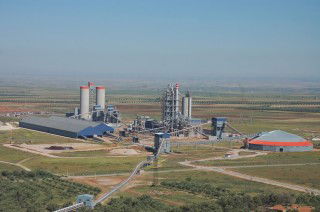The economic slowdown and the real estate bubble in Vietnam have resulted in a sharp decrease in cement demand in the past few years and an oversupply is envisaged in the years to come. However, the overall surplus situation barely scratches the surface, as balancing regional supply and shortages poses a far more complicated issue that must quickly be addressed. By Huong Thieu and Duy Nguyen, StoxPlus Corp, Vietnam.
After achieving several years of GDP growth of 7.5 per cent or above, Vietnam’s economic growth rate fell to 5.3 per cent in 2009 following the effects of the global financial crisis. This was further exacerbated by high inflation which contributed to the country’s unstable macroeconomic position over the 2008-12 period. Inflation was as high as 23.1 per cent in 2008, before falling to 7-9 per cent in the two subsequent years, rising again to 18.7 per cent in 2011, then declining to 9.1 per cent last year.
However, according to the World Bank, this year Vietnam has witnessed some positive macroeconomic indicators. In the 1H13, inflation remained at a moderate 6.7 per cent and at the end of the year is expected to be around seven per cent.
